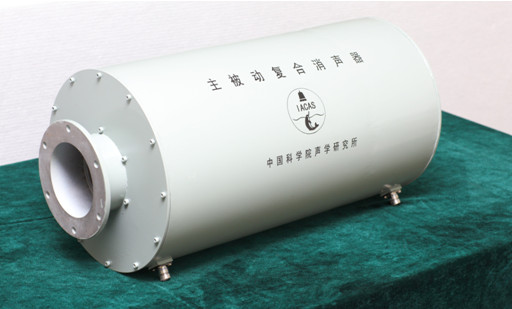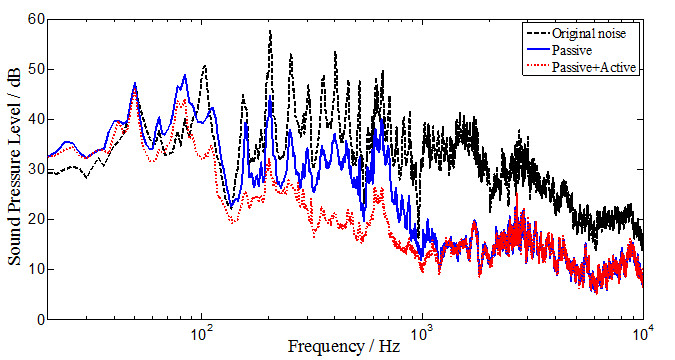|
|
Passive mufflers are commonly installed in ventilation systems to reduce the noise generated by the fans, compressors and turbulences. They are effective for high frequency noise above several hundred Hertz.
However, in the low frequency range, passive mufflers tend to be relatively large, bulky and impractical. An effective way of reducing low frequency noise is active noise control. In an active noise control system, a secondary source is used to generate an anti-noise for cancelling the primary noise source based on the principle of superposition.
The application of active noise control in ventilation systems has been widely investigated since only one-dimensional ducts or pipe network are involved. Although there is still much work on active mufflers, active muffler products are very few until now since their cost and complexity are high. In addition, active mufflers have limited performances at higher frequencies and must be combined with passive mufflers in order to reduce broadband noise.
Performances of active noise control are related to parameters of controller and configurations of muffler and pipe. Recently, researchers from the Institute of Acoustics (IOA) of the Chinese Academy of Sciences have investigated the influence of these parameters by experiments.
In these experiments, a loud speaker and a centrifugal fan are used as noise sources for the cases without air flow and with air flow, respectively. For the case without air flow, effects of analog low-pass filters in the controller, locations of sensors in mufflers and structures of pipe end on active noise control performances are researched. In addition, noise reductions inside and outside the pipes are compared. For the case with air flow, passive and active-passive performances of an active-passive hybrid muffler with optimized parameters are analyzed.
A kind of active-passive hybrid muffler with optimized parameters shown in Fig.1 is developed for ventilation systems to reduce broadband noise. The active-passive hybrid muffler has a total length of 500mm, an inner diameter of 100mm and an outer diameter of 270mm.
A typical performance curve of active-passive hybrid mufflers is shown in Fig.2 where the noise source is centrifugal fan and the flow velocity is 15m/s. The passive part can effectively attenuate the noise in a broadband frequency range above 200 Hz. The active part can obtain extra more than 6dB noise reduction over 50 Hz-1000 Hz.
This research focuses on practical system considerations of active mufflers and developed a kind of optimization design method for active-passive hybrid mufflers. These achievements pave way for practical engineering applications of active-passive mufflers.

Fig.1 Active-passive muffler (Image by IOA)

Fig.2 Performance of active-passive muffler (Image by IOA)
Reference:
SUN Hongling, AN Fengyan, WU Ming and YANG Jun. Experiments on Performances of Active-Passive Hybrid Mufflers. Proceedings of the 22nd International Congress on Sound and Vibration, ISBN 978-88-88942-48-3/ISSN 2329-3675, The 22nd International Congress on Sound and Vibration (ICSV22), 2015.
Contact:
SUN Hongling
Email: hlsun@mail.ioa.ac.cn


